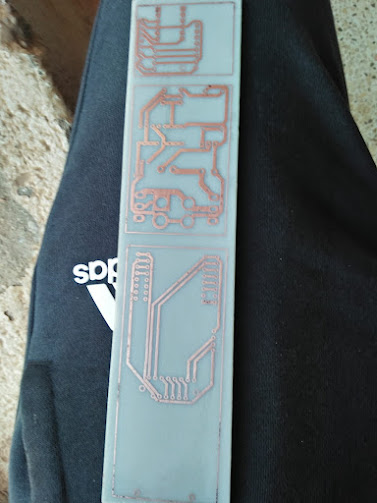REPORT ON STATIC TESTING DONE ON 16TH APRIL 2021
Prep work
This is a summary of the work done in preparation for the static testing.
These activities were:
Modification of the test stand to accommodate for higher load measurements as well as to accommodate the new size of the motor
Motor Design
1.Propellant
The propellant of choice was Potassium Nitrate(Oxidizer) and Dextrose(Fuel/Binder) as well as Iron (III) oxide as the burn catalyst. An oxidizer to fuel ratio of 65%:35% was used and the catalyst added to 1% of the mass of the oxidizer+fuel. The propellant was cast into two grains namely V8 and V9 to form two motors.
V8 Dimensions
Grain length: 150mm
Grain diameter: 30mm
Core diameter: 14mm
V9 Dimensions
Grain length: 150mm
Grain diameter: 30mm
Core diameter: 13mm
Prior to static testing a simulation using openMotor was done for a theoretical performance of the motor.
A link to this data is attached:
https://github.com/nakujaproject/N1-motor/tree/main/Proposed%20Final%20Spec
A photo of the data is attached:
V8
V9
The theoretical performance data is as tabulated:
2.Motor Casing
The casing of the motor was made from 40mm x 4.5 mm PN25PVC. The top side(bulk head) as well as the nozzle were to be made from tile cement.
The nozzle was designed with the following dimensions:
Throat diameter - 9 mm
Exit diameter - 9 mm
Throat length - 30mm
Divergence half angle - 90 degrees
Convergence half angle - 90 degrees
The design of the casing was as follows:
Motor Fabrication
The KNSU propellant was cast as follows:
https://www.youtube.com/watch?v=WRfyVkgOjfY
The nozzle and endcap were fabricated using tile cement(grout).
The grout is mixed with water in the ratio 3:1 by weight and poured into the pipe. The cast is left to set overnight. The nozzle is made by drilling the whole with a 9mm drill bit. This resulted in a straight nozzle as designed.
The resultant motor was visualized as:
Static Firing
The static firing was a fail as the fuel failed to ignite.
Results
The fuel failed to ignite so no data was acquired.
The motor was cut open after the failed test and revealed the following:
Failures
The team speculated that the failed ignition was as a result of the ignition system used.
Solutions
The propulsion team met and came up with the following solutions:
Fabricate a longer burning igniter to ensure proper ignition
Conclusion
The KNDX in theory seems like a go to propellant due to its specific impulse but it has its construction demerits. It is up to the team to get the most out of this propellant.



Comments
Post a Comment